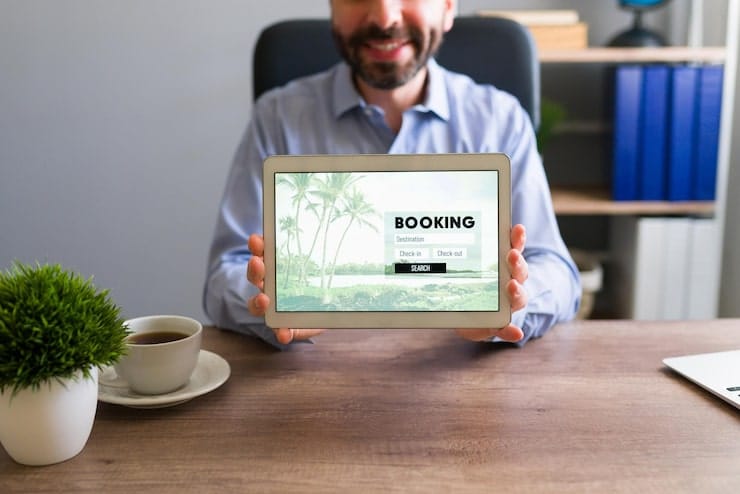Introduction:
You’ve built a beautiful therapy website, added your credentials, and maybe even included a blog — but you’re still not getting inquiries or bookings.
You’re not alone.
As specialists in therapist website design Canada, we hear this concern almost daily: “Why is my therapy website not converting clients?”
The truth is, most therapy websites are built to look “nice” — but not to perform. This post will break down the reasons your therapy website may not be working and show you exactly how to fix it with strategies rooted in real-world psychology, SEO, and UX best practices.
Why Is Your Therapy Website Not Converting Clients?

Your therapy website has one main job: to turn visitors into paying clients.
If you’re seeing:
No appointment bookings
- High bounce rates
- Lots of clicks but no conversions
- Clients choosing “therapy near me in Toronto” — but not you
…it’s a clear sign that your site isn’t doing its job.
Top Website Mistakes Therapists Make
Before we fix the issues, let’s identify them. Here are some common website mistakes Canadian therapists make:
- Unclear or missing call-to-action (CTA)
- Slow therapy website loading speed
- Weak copy that lacks emotional connection
- Poor homepage layout for therapists
- No responsive design for therapy websites
- No visible online scheduling or secure intake forms
- Using vague “About” sections that don’t speak to the client’s pain
- Outdated branding or visuals that don’t convey trust
Even one of these can lead to no-shows and bounce rate spikes. Let’s turn this around.
How to Fix a Therapist Website That Isn’t Getting Bookings
Here’s how to improve therapy website conversion with clear, strategic updates:
1. Optimize Your Homepage Layout for Therapists
Why it matters:
Your homepage sets the tone for your brand. A cluttered or confusing layout causes drop-offs in under 10 seconds
Fix it with:
- Clear headline that communicates who you help and how
- One compelling CTA button above the fold: “Book a Free Consult”
- Clean navigation: Home, About, Services, Blog, Contact
- Trust indicators like certifications, testimonials, and photos
Pro Tip: Use a professional layout that supports branding for mental health websites — soothing, simple, and focused
2. Add Clear CTAs That Actually Convert
Vague CTAs like “Learn More” don’t drive action.
Effective therapist call-to-action examples:
- “Book Your Free 15-Min Call”
- “Start Your Healing Journey”
- “Check Availability”
Make your CTA visible on every page — especially blog posts and your homepage.
3. Improve Website Copywriting for Therapists
Your words should speak directly to the client’s pain points.
Clients don’t want credentials; they want to feel understood. This is where therapy website copywriting tips come in.
Ask yourself:
- Am I using “you” more than “I”?
- Does my copy address emotions like anxiety, trauma, burnout?
- Is there a clear next step after reading?
Include terms your clients are already searching, like “therapist Toronto” or “online therapy for anxiety in Vancouver.”
4. Focus on Page Speed and Mobile Experience
A slow therapy website loading speed is a silent killer of conversions.
Also, most users come from mobile — your site must have a responsive design for therapy websites.
Fix it by:
- Compressing images
- Removing bulky plugins
- Using mobile-friendly fonts and buttons
- Hosting your site on reliable, fast servers
5. Build Trust with Branding and Secure Booking Tools
Your website needs to feel safe, polished, and welcoming — especially for vulnerable visitors.
Must-haves:
- SSL certificate (https)
- Branded color palette that calms, not overwhelms
- Clear info about confidentiality and secure sessions
- Secure booking for therapy practice with tools like Jane, Owl Practice, or SimplePractice
All of this builds online visibility for therapists and trust with potential clients.
Bonus Tips to Attract Therapy Clients Online
Here are extra strategies to get more therapy clients online from your website:
- Add video: A short welcome video builds instant trust
- Use blog posts to rank for long-tail keywords like “coping with burnout Toronto”
- Include local SEO terms: “therapy near me in Toronto”, “grief counselling Calgary”
- Integrate done-for-you therapy websites solutions like Wellovis that remove tech overwhelm
Also, invest in psychology website optimization Canada best practices — like meta tags, header tags, alt text, and schema markup — to boost your Google visibility.
Final Thoughts
If your website isn’t bringing in new clients, it’s not your fault — most therapists were never trained in marketing or design.
But in today’s online-first world, your website is your most valuable business tool.
At Wellovis, we offer done-for-you therapy websites designed specifically for Canadian therapists. We combine great design, secure booking, strategic copy, and SEO to help you grow your practice with confidence.
FAQs
Q: What makes a therapy website ineffective?
A: Poor layout, slow loading speed, unclear CTAs, and copy that doesn’t resonate with the client’s needs.
Q: How do I fix a therapist website that isn’t getting bookings?
A: Start by improving layout, copywriting, CTA visibility, mobile responsiveness, and integrating secure booking tools.
Q: What should a therapy website include to convert visitors?
A: Clear CTAs, emotional and client-focused copy, fast loading, a mobile-friendly layout, and trust-building elements like testimonials and secure forms.
Q: Is my therapy website design hurting my client bookings?
A: If it’s outdated, slow, or not mobile-optimized, yes — those are common reasons clients leave without booking.
Q: How do Canadian therapists increase website conversions?
A: By using optimized design, localized SEO, secure booking options, and compelling content that builds trust.




